With the 6th principle of the Manifesto for Agile Software Development distributed teams face a contradiction: "The most efficient and effective method of conveying information to and within a development team is face-to-face conversation." In the Scrum Guide, which focuses on 5 to 11 team members, there is also no reference to dealing with distributed teams.
For this reason, we once again invited you to the topic of "distributed teams" on June 5. After discussing distributed teams in Daily Scrum and distributed retrospectives, this time the focus was on refinements. Due to the short section on the topic, the Scrum Guide leaves a lot of room for interpretation and we discovered through our exchange of experiences that this continuous refinement process is not so easy to generalize in practice.
The user group meeting took place in a small, cozy group. We therefore decided together to discuss the various topics in the group over a lean coffee and exchange ideas. The order of the topics was determined by a magical prioritization.
Using these two methodologies, we addressed the following questions:
- What should I bear in mind when refining?
- Which meetings are suitable for distributed working and which are not?
- Which tools help with distributed teams (distributed refinements) and what should be considered when using digital tools?
- What needs to be considered during a refinement?
One part of refinements can be that requirements are specified and detailed between the product owner and the development team. But how do we go into detail without getting lost in the details?
Focus has emerged as a core aspect in the exchange of topics. In addition to this, we have identified a strong product owner in the team as beneficial, who intercepts spontaneous topics and prioritizes them accordingly. Transparency about the current work packages and the next planned topics is also an important aspect. However, if the priorities of new, spontaneous topics still compete with existing requirements, it is essential to resolve the conflict at a higher management level.
Our wibas learnings on the topic of distributed refinements with multiple teams are, for example:
- Participation with 1-2 representatives from each team to ensure that the findings from the meeting are disseminated to the teams
- Use gallery view with the digital video tool so that everyone can see each other and recognize gestures at the same time
- Appoint a moderator to keep the process focused and timeboxed
- A fixed and repetitive agenda to enable stabilization through continuity
- Recording of the meeting so that people who are unable to attend can follow up on the findings
- Execution of two refinements within a sprint to address dependencies and impediments in good time
- Each participant dials into the virtual refinement separately so that everyone has the same meeting conditions (everyone is dialed in virtually)
- A pre-briefing so that the teams can prepare for the refinement
- Which meetings are suitable for distributed working and which are not?
If we look at the different flight levels, we have found that the strategic level, such as the design of a roadmap, is not suitable for distributed working. The reasons for this are, for example, a lack of clarity about topics and that digital tools (see question 3) are too inflexible to digitize solutions. For this reason, physical and personal exchange has proven its worth. For example, a photo of the latest work status can be stored digitally in a cloud for tracking purposes.
The preparation of a sprint, on the other hand, can also be successfully distributed between the product owner and development team or between the customer and product owner through video conferences and the use of tools such as Jira.
A business model analysis or the review of a product's lifecycle is also suitable for distributed work. Market observations and analyses can be created in a distributed manner by entering questions as stories in the product backlog and breaking them down into smaller tasks for the sprint work. These can be made digitally transparent, e.g. using tools such as Jira or Trello.
- Which tools help with distributed teams (distributed refinements) and what should be considered when using digital tools?
When collecting tools, we found that there are quite a few and it is easy to lose track. Therefore, the first question to ask is what purpose the tool should serve. We have divided the tools into the following categories, for example:
- Knowledge documentation
- Sprint backlog
- Product backlog
- Communication
On the flipchart you will find a collection of our identified tools that have proven themselves in distributed working. Jira is suitable for the operational level to digitize and prioritize requirements. GoToMeeting and Zoom are video chat tools for holding digital meetings. Slack allows you to set a timebox for events, for example. Confluence can be used to record meeting minutes or resolutions.
When using digital tools, care should be taken to ensure that they comply with company data security and data privacy requirements. To ensure complication-free use, the works council should be involved at an early stage. Training on the use of the tool by involving the actual users has also proven to be beneficial.
Conclusion
The insight of the evening: Collocation is the most effective and efficient way to work - but distributed working is unavoidable in certain situations. Digitalization offers us solutions in the form of tools, but this alone does not make us a high-performance team.
It is our attitude to treat each other attentively and respectfully, including via video chat, and to be open to new approaches. Maintaining transparency and focus in the digital work results helps us to understand tasks together and develop them further.
A shared result emerges from distributed work.

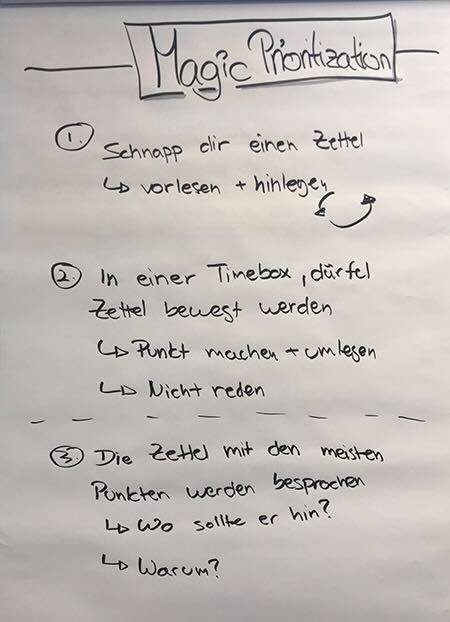
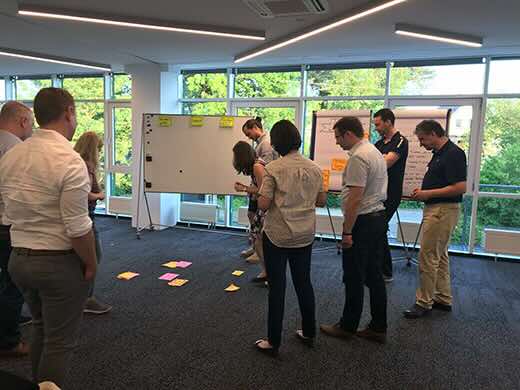
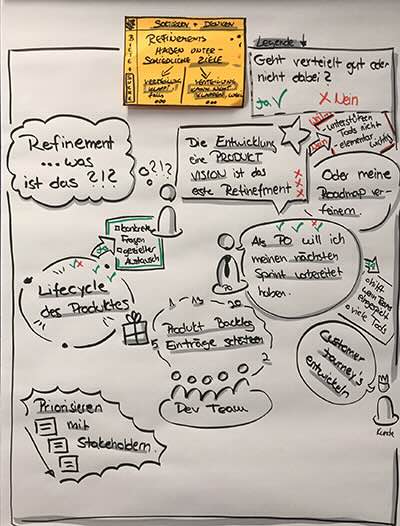
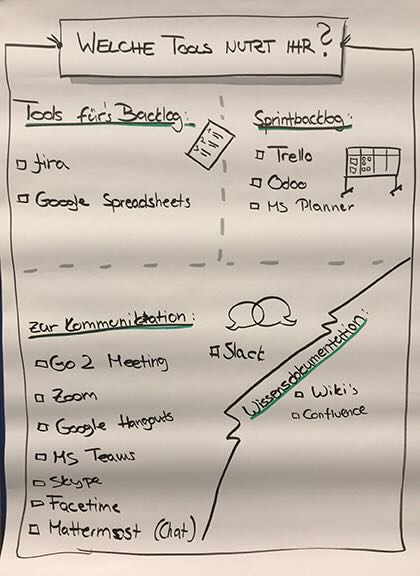
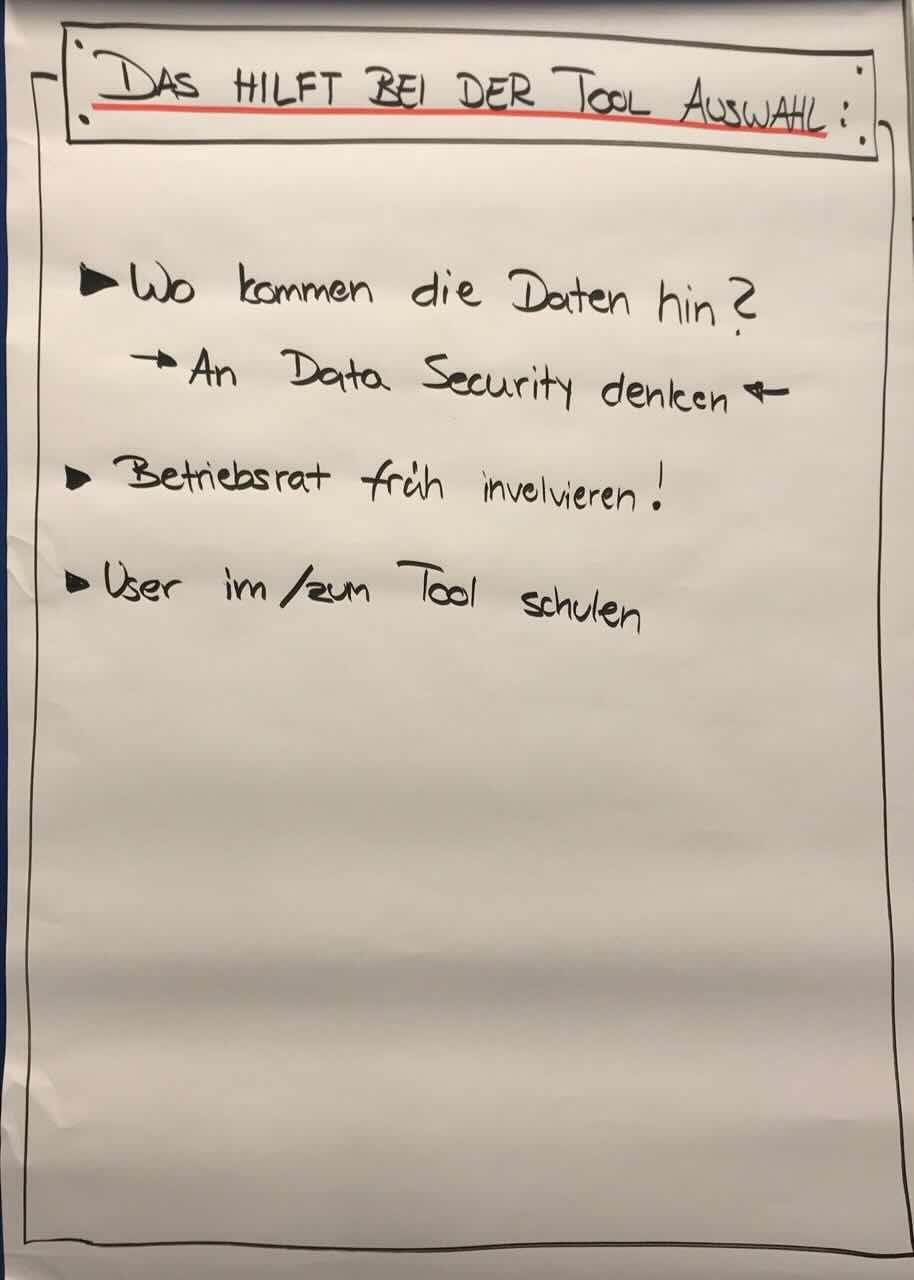
Comments
Write a comment